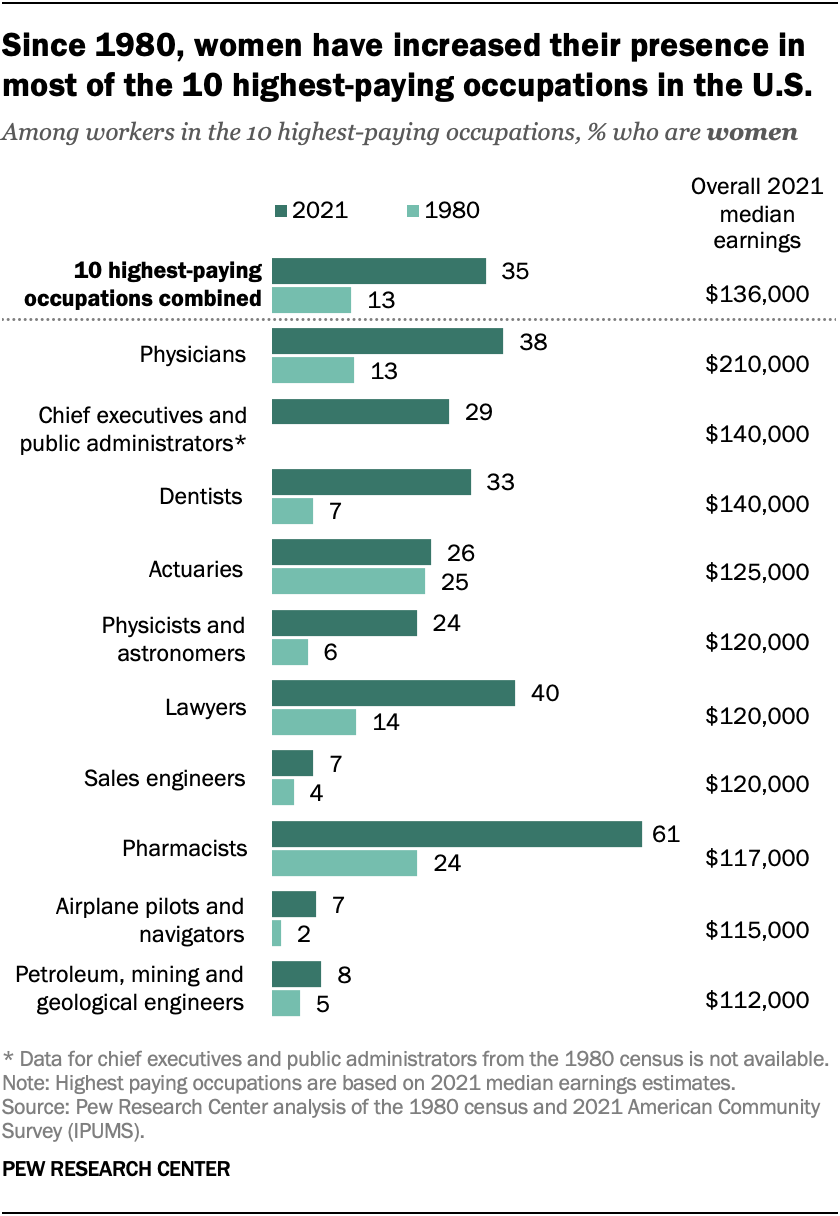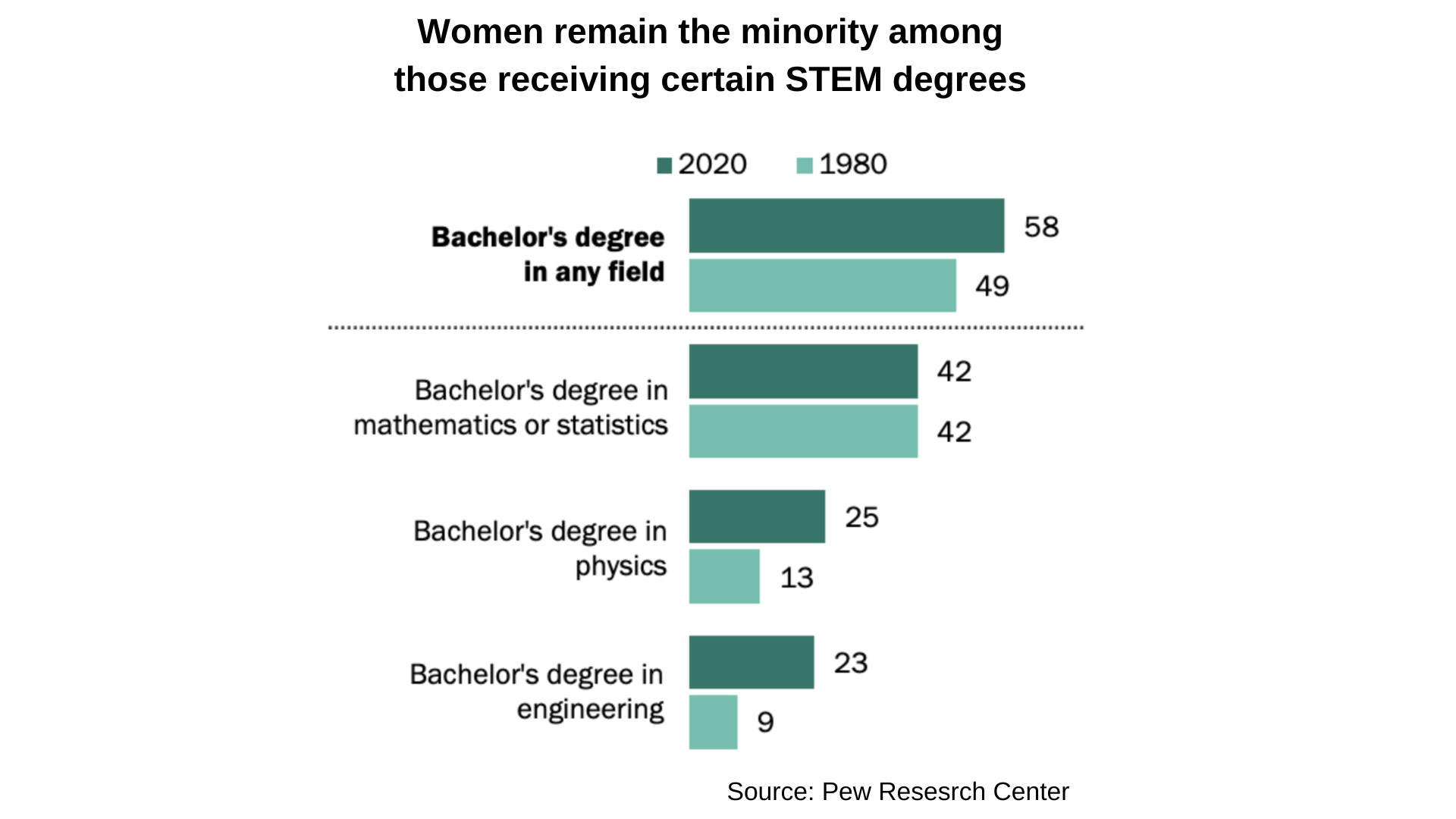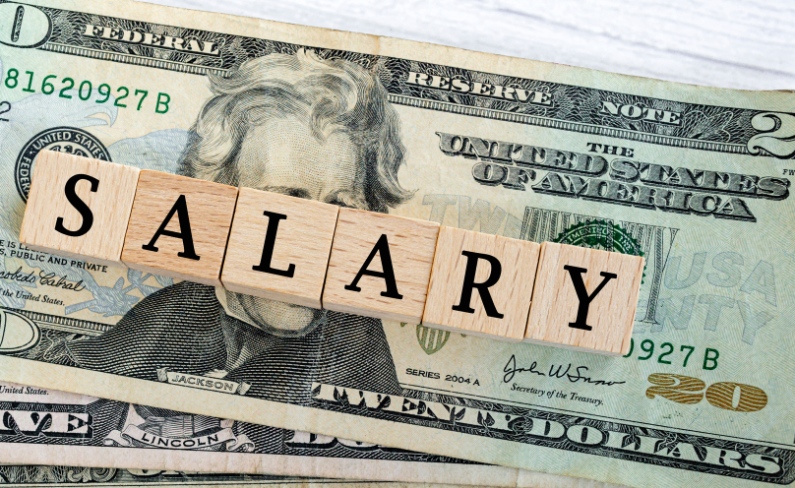As per the most recent business and workplace research report from the Pew Research Center, the proportion of women in the top 10 high-paying professions has risen from 13% in 1980 to 35% today. This increase reflects their growing presence across professions such as physicians, lawyers, and pharmacists. It signifies a positive advancement toward gender equality and highlights the expanding opportunities for women in traditionally male-dominated sectors.

Despite the substantial progress, women continue to represent the minority in nine out of the ten highest-paying occupations, with the exception being pharmacists, where 61% of professionals are women. However, it’s important to note that the overall share of women across all these occupations (35%) still falls below their representation in the entire U.S. workforce (47%).
It’s also worth highlighting that professionals in these top 10 occupations typically earn more than $100,000 annually, which is more than double the national average income of $41,000.
The Varying Strides of Women’s Progress Across Industries
The presence of women in various occupations has seen contrasting shifts over the years. Notably, the percentage of women in dentistry has increased significantly, more than quadrupling from 7% to 33% since 1980. Similarly, the proportion of women in the medical field has nearly tripled, rising from 13% to 38% among physicians. The legal profession has also witnessed a significant surge, with the share of women lawyers climbing from 14% to 40%.
In contrast, the progress in high-paying engineering fields has been more modest, with women comprising less than 10% of sales engineers and professionals in petroleum, mining, and geological engineering.
Furthermore, despite advancements, the representation of women in certain roles remains notably low, such as in the field of airplane piloting and navigation, where only 7% of professionals are women, albeit an increase from 2% in 1980.

Advancements in Women’s Attainment of Advanced Degrees
Several high-paying occupations, such as physicians, lawyers, dentists, and pharmacists, necessitate specialized graduate degrees. One significant approach through which women have augmented their presence in these well-paid professions is by actively pursuing the degrees required for these roles.
Currently, women constitute approximately half of the recipients of the following advanced degrees:
Women are now attaining 63% of Doctor of Pharmacy (Pharm.D.) degrees, aligning closely with their representation in the pharmacist occupation (61%). Notably, pharmacists are the only professionals among the top 10 occupations where women constitute the majority. This phenomenon is attributed to the industry’s provision of flexible work hours, a collaborative work environment, and family-friendly policies, as suggested by economic research.
Nonetheless, women continue to be underrepresented among recipients of specific bachelor’s degrees necessary for certain high-paying occupations:
Mathematics or statistics: The proportion of female recipients remains at 42%, the same as in 1980.
Physics: The percentage of female recipients has increased to 25%, compared to 13% in 1980.
Engineering: The share of female recipients has risen to 23%, up from 9% in 1980.
Apart from undergraduate major selection, various factors contribute to the barriers women face when entering high-paying occupations, despite achieving parity in many advanced degree programs. Gender disparities in household and parenting responsibilities could potentially influence these barriers, as well as instances of gender discrimination.
More reading on Salary Reports of the U.S.: Global Salary Search – USA

